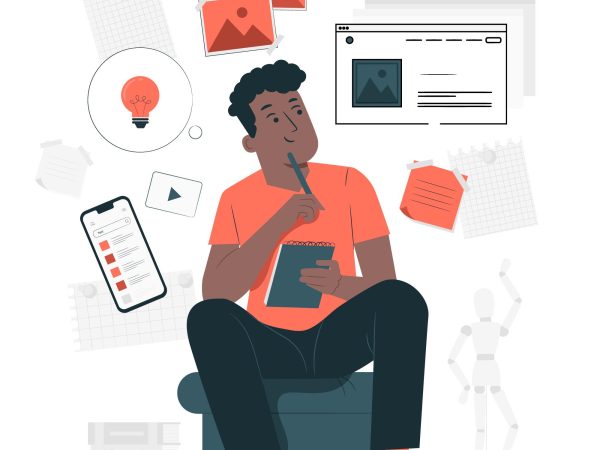Accurate and effective documentation is essential in therapy sessions. Therapists need structured notes to track progress, ensure continuity of care, and meet professional and legal requirements. However, choosing the right template can be overwhelming. This article explores some of the most widely used therapy session note-taking templates, such as SOAP (Subjective, Objective, Assessment, Plan) and DAP (Data, Assessment, Plan), and provides downloadable templates with customization tips to fit your specific needs.
Why Use a Standardized Therapy Note Template?
Using a structured format for therapy notes ensures consistency, reduces documentation time, and improves communication with other professionals. It also helps in:
- Organizing thoughts logically
- Ensuring compliance with medical and legal standards
- Making it easier to review past sessions and track client progress
Popular Therapy Session Note Templates
1. SOAP Notes (Subjective, Objective, Assessment, Plan)
SOAP notes are among the most widely used templates in medical and psychological fields. They offer a structured and concise way to document therapy sessions.
Breakdown of SOAP Notes:
- Subjective (S): Client’s self-reported thoughts, feelings, concerns, and experiences.
- Objective (O): Observable behaviors, physical presentation, and any measurable data.
- Assessment (A): Therapist’s interpretation, diagnosis, or clinical judgment based on the subjective and objective data.
- Plan (P): The next steps, including future interventions, homework, or goals for the client.
Pros:
- Comprehensive and widely accepted format
- Ensures all important details are covered
- Easy to use for multidisciplinary teams
Cons:
- Can be time-consuming
- Might not be flexible for all therapy styles
2. DAP Notes (Data, Assessment, Plan)
The DAP note format is a simplified version of SOAP, commonly used in counseling and psychotherapy.
Breakdown of DAP Notes:
- Data (D): Describes the session, including client statements, behaviors, and therapist observations.
- Assessment (A): The therapist’s clinical impressions, progress assessment, and diagnosis.
- Plan (P): Future strategies, interventions, and client goals.
Pros:
- More concise than SOAP notes
- Easier to complete for therapists with a high caseload
Cons:
- Less structured compared to SOAP
- May not capture as much detailed information
3. BIRP Notes (Behavior, Intervention, Response, Plan)
BIRP notes focus on behavioral observations and the effectiveness of interventions.
Breakdown of BIRP Notes:
- Behavior (B): Description of the client’s presenting issues and behaviors.
- Intervention (I): Techniques and methods the therapist used during the session.
- Response (R): Client’s reaction to the intervention.
- Plan (P): Next steps and future treatment approaches.
Pros:
- Emphasizes behavioral changes
- Useful for tracking therapy progress
Cons:
- Less emphasis on subjective experiences
- May not be ideal for therapy styles focusing on emotions and thoughts
4. GIRP Notes (Goal, Intervention, Response, Plan)
GIRP notes are similar to BIRP but focus more on goals rather than behaviors.
Breakdown of GIRP Notes:
- Goal (G): Client’s short-term and long-term therapy goals.
- Intervention (I): Therapist’s techniques to help the client achieve their goals.
- Response (R): Client’s reaction and progress.
- Plan (P): Next steps in treatment.
Pros:
- Goal-oriented approach
- Helps track client progress effectively
Cons:
- Less structured than SOAP and DAP
- May not capture all client experiences
Choosing the Right Therapy Note Template
The best note template depends on your therapy style, client needs, and documentation requirements. Here are some tips for customization:
- If you need detailed clinical documentation, go with SOAP.
- If you prefer a quicker, streamlined approach, use DAP.
- If you work in behavior-focused therapy, BIRP is a great choice.
- If goal tracking is your priority, GIRP works best.
Downloadable Templates
We’ve created free, customizable templates for each format. You can download them below:
- [SOAP Note Template]
- [DAP Note Template]
- [BIRP Note Template]
- [GIRP Note Template]
Final Thoughts
Effective therapy documentation is crucial for tracking progress and ensuring high-quality care. By selecting the right note-taking template, you can streamline your workflow and improve your client interactions. Try different templates to see which one aligns best with your practice style and documentation needs.
Frequently Asked Questions (FAQs)
1. What is the most commonly used therapy note format?
The SOAP note format is the most widely used due to its structured approach and ease of use in various healthcare settings.
2. Can I modify therapy note templates to fit my practice?
Yes, many therapists customize templates to better fit their practice style, therapy methods, and client needs.
3. Are there any legal requirements for therapy notes?
Yes, therapy notes must meet HIPAA (in the U.S.) or other relevant privacy laws to ensure confidentiality and compliance.
4. How often should therapy session notes be updated?
It is recommended to write session notes immediately after each session to ensure accuracy and completeness.
5. Can I use digital tools for therapy session notes?
Yes, many therapists use Electronic Health Record (EHR) systems or specialized therapy note software to streamline documentation.
Explore insightful articles on NoteNest Blog, where our expert authors share valuable knowledge on productivity, organization, and note-taking strategies to boost efficiency.

